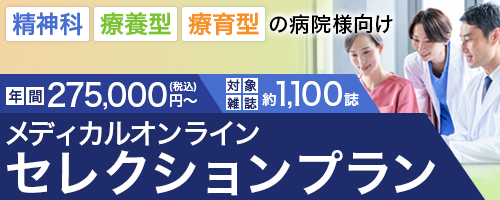アブストラクト
| Title | 4 画像診断と帰結予測 |
|---|---|
| Subtitle | 特集 脳卒中リハビリテーション医療アップデート |
| Authors | 小山哲男*1,2, 道免和久*2 |
| Authors (kana) | |
| Organization | *1西宮協立脳神経外科病院リハビリテーション科, *2兵庫医科大学医学部リハビリテーション医学講座 |
| Journal | The Japanese Journal of Rehabilitation Medicine |
| Volume | 61 |
| Number | 2 |
| Page | 96-104 |
| Year/Month | 2024 / 2 |
| Article | 報告 |
| Publisher | 日本リハビリテーション医学会 |
| Abstract | 「要旨」本稿は, 脳卒中患者の帰結予測に役立つ画像手法のうち, 臨床現場で実践しやすい手法の2つを概説する. これまで, 急性期脳画像よる病巣体積推定は, 機能的レベルでの帰結予測にあまり寄与しないとされてきた. しかし近年, 病巣が皮質脊髄路に被る体積は, 運動機能の帰結と関連することが明らかとなってきた. また, 拡散テンソル画像は近年注目されている手法である. 発症2週頃に撮像される拡散テンソル画像は, 脳内のさまざまな神経線維束の損傷程度を定量化する. 脳卒中リハビリテーションにおいて, それぞれの患者の障害像に見合った計画立案が大切である. 画像診断を用いた帰結予測はこれに大きく貢献する. |
| Practice | 医療技術 |
| Keywords | 帰結, 定量化, 脳血管, 標準脳, モデル |
- 全文ダウンロード: 従量制、基本料金制の方共に770円(税込) です。
参考文献
- 1) Hand PJ, Wardlaw JM, Rivers CS, et al : MR dif-fusion-weighted imaging and outcome prediction after ischemic stroke. Neurology 2006 ; 66 : 1159-1163
- 2) Schiemanck SK, Kwakkel G, Post MW, Kappelle LJ, Prevo AJ : Predicting long-term independency in activities of daily living after middle cerebral artery stroke : does information from MRI have added predictive value compared with clinical informa-tion? Stroke 2006 ; 37 : 1050-1054
- 3) Boyd LA, Hayward KS, Ward NS, et al : Biomark-ers of Stroke Recovery : Consensus-Based Core Recommendations from the Stroke Recovery and Rehabilitation Roundtable. Neurorehabil Neural Repair 2017 ; 31 : 864-876
- 4) Kim B, Winstein C : Can Neurological Biomarkers of Brain Impairment Be Used to Predict Poststroke Motor Recovery? A Systematic Review. Neuroreha-bil Neural Repair 2017 ; 31 : 3-24
- 5) Zhu LL, Lindenberg R, Alexander MP, Schlaug G : Lesion load of the corticospinal tract predicts motor impairment in chronic stroke. Stroke 2010 ; 41 : 910-915
残りの18件を表示する
- 6) Feng W, Wang J, Chhatbar PY, et al : Corticospinal tract lesion load : An imaging biomarker for stroke motor outcomes. Ann Neurol 2015 ; 78 : 860-870
- 7) Uchiyama Y, Domen K, Koyama T : Outcome Pre-diction of Patients with Intracerebral Hemorrhageby Measurement of Lesion Volume in the Cortico-spinal Tract on Computed Tomography. Prog Rehabil Med 2021 ; 6 : 20210050
- 8) Yoo JH, Chong B, Barber PA, Stinear C, Wang A : Predicting Motor Outcomes Using Atlas-Based Voxel Features of Post-Stroke Neuroimaging : A Scoping Review. Neurorehabil Neural Repair 2023 ; 37 : 475-487
- 9) Kunimatsu A, Aoki S, Masutani Y, Abe O, Mori H, Ohtomo K : Three-dimensional white matter trac-tography by diffusion tensor imaging in ischaemic stroke involving the corticospinal tract. Neuroradi-ology 2003 ; 45 : 532-535
- 10) Yu C, Zhu C, Zhang Y, et al : A longitudinal diffusion tensor imaging study on Wallerian degeneration of corticospinal tract after motor pathway stroke. Neu-roimage 2009 ; 47 : 451-458
- 11) Koyama T, Tsuji M, Miyake H, Ohmura T, Domen K : Motor outcome for patients with acute intra-cerebral hemorrhage predicted using diffusion tensor imaging : an application of ordinal logistic modeling. J Stroke Cerebrovasc Dis 2012 ; 21 : 704-711
- 12) Wakana S, Caprihan A, Panzenboeck MM, et al : Reproducibility of quantitative tractography meth-ods applied to cerebral white matter. Neuroimage 2007 ; 36 : 630-644
- 13) Koyama T, Koumo M, Uchiyama Y, Domen K : Utility of Fractional Anisotropy in Cerebral Pedun-cle for Stroke Outcome Prediction : Comparison of Hemorrhagic and Ischemic Strokes. J Stroke Cere-brovasc Dis 2018 ; 27 : 878-885
- 14) Koyama T, Tsuji M, Nishimura H, Miyake H, Ohmura T, Domen K : Diffusion tensor imaging for intracerebral hemorrhage outcome prediction : comparison using data from the corona radiata/internal capsule and the cerebral peduncle. J Stroke Cerebrovasc Dis 2013 ; 22 : 72-79
- 15) Sullivan EV, Pfefferbaum A : Diffusion tensor imag-ing and aging. Neurosci Biobehav Rev 2006 ; 30 : 749-761
- 16) Yoshioka H, Horikoshi T, Aoki S, et al : Diffusion tensor tractography predicts motor functional out-come in patients with spontaneous intracerebral hemorrhage. Neurosurgery 2008 ; 62 : 97-103 ; dis-cussion 103
- 17) Kusano Y, Seguchi T, Horiuchi T, et al : Prediction of functional outcome in acute cerebral hemorrhage using diffusion tensor imaging at 3T : a prospective study. AJNR Am J Neuroradiol 2009 ; 30 : 1561-1565
- 18) Stinear CM, Byblow WD, Ackerley SJ, Barber PA, Smith MC : Predicting Recovery Potential for Indi-vidual Stroke Patients Increases Rehabilitation Effi-ciency. Stroke 2017 ; 48 : 1011-1019
- 19) Uchiyama Y, Domen K, Koyama T : Brain regions associated with Brunnstrom and functional inde-pendence measure scores in patients after astroke : a tract-based spatial statistics study. J Phys Ther Sci 2023 ; 35 : 211-216
- 20) Koyama T, Uchiyama Y, Domen K : Comparison of Fractional Anisotropy from Tract-Based Spatial Statistics with and without Lesion Masking in Patients with Intracerebral Hemorrhage : A Tech-nical Note. J Stroke Cerebrovasc Dis 2019 ; 28 : 104376
- 21) Warrington S, Bryant KL, Khrapitchev AA, et al : XTRACT - Standardised protocols for automated tractography in the human and macaque brain. Neuroimage 2020 ; 217 : 116923
- 22) Mochizuki M, Uchiyama Y, Domen K, Koyama T : Applicability of automated tractography during acute care stroke rehabilitation. J Phys Ther Sci 2023 ; 35 : 156-162
- 23) Hernandez-Fernandez M, Reguly I, Jbabdi S, Giles M, Smith S, Sotiropoulos SN : Using GPUs to accel-erate computational diffusion MRI : From micro-structure estimation to tractography and connec-tomes. Neuroimage 2019 ; 188 : 598-615



